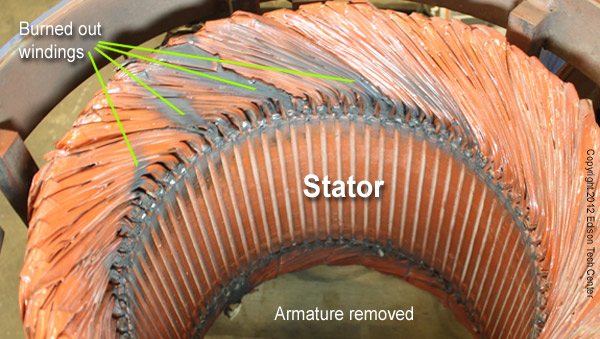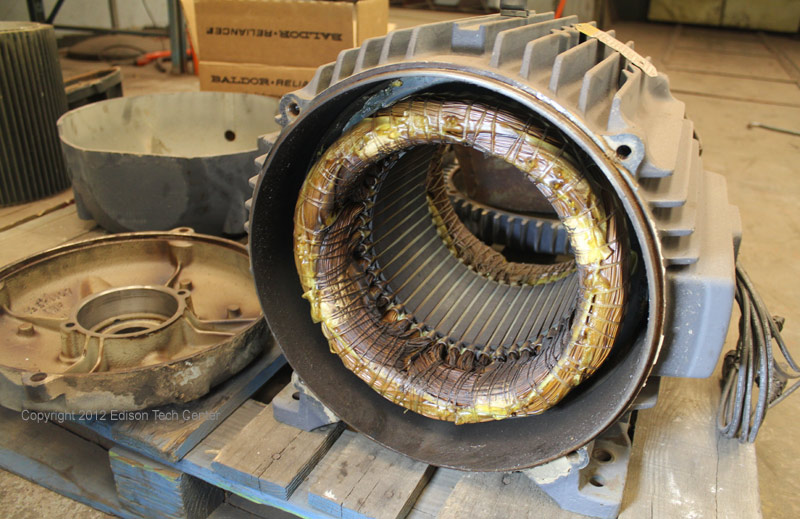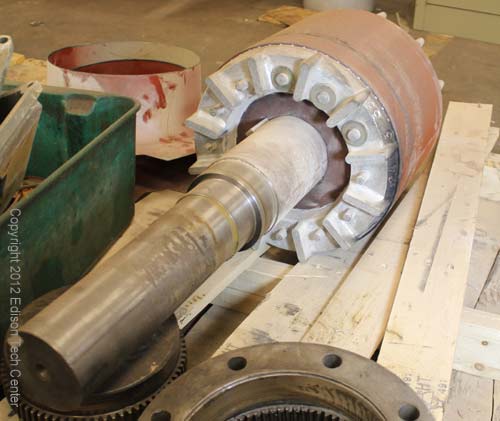Induction Motors
The most popular electric motor in the world
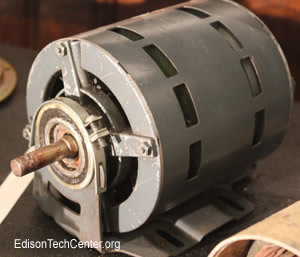 |
|
1.) How it works:
The Induction motor has two sets of windings (copper or aluminum wire coiled to form electromagnets). When the windings in the stator are energized it induces current in the windings in the rotor (this invisible force is call induction, learn about the concept of induction here).
Advantages of Induction Motors:
Capable of high speed without brushes to be worn out, runs off of AC grid
power. They are very efficient.
Disadvantages:
Traditionally induction motors only run well at a given stable speed and torque, however if used with a VFD
- variable-frequency drive their uses can be increased.
Parts:
Stator - consists of an electro magnet around the outside of the motorRotor (Armature) - can be a heavy set of coils tightly packed into a cylinder, or can be in the form of a "squirrel cage".
See the video below where we show the parts of various kinds of induction motor:
Windings - copper or aluminum wire insulated and wrapped in coils around iron cores. Each nub on the iron stator forms a different pole, these poles will reverse, causing the rotor to turn.
Below:
Installing copper coils in the stator of a large induction motor
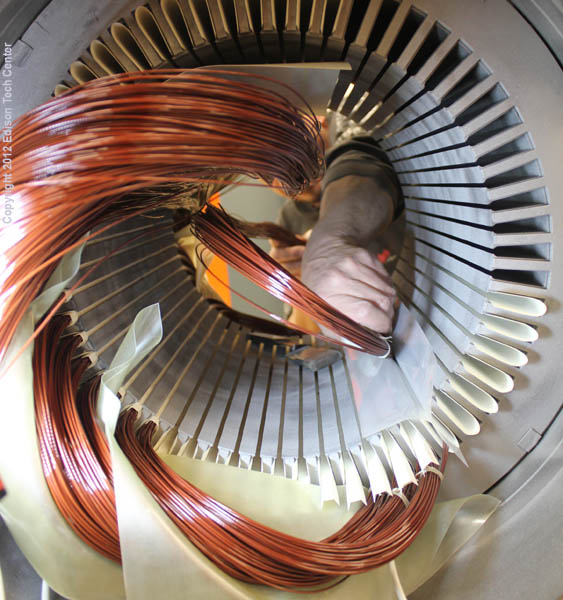
Below: Induction motors with armatures removed. No brushes to wear out!
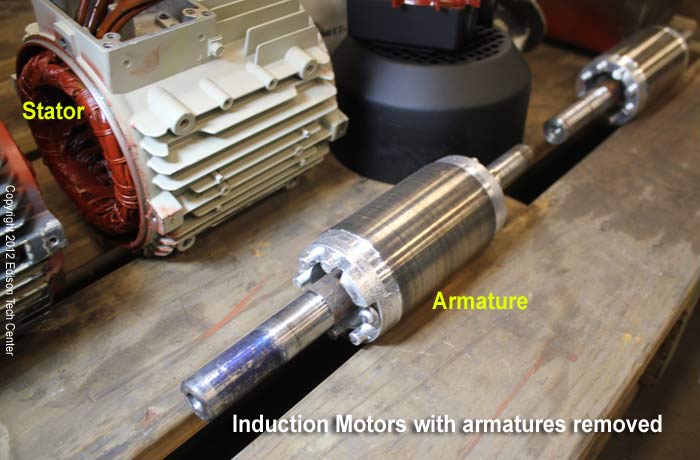
Below: a large burned out induction motor
See more photos of induction motors.
Variants:
Torque Motor - induction motor capable of operating indefinitely
while stalled (when rotor is blocked from turning). This motor is not
damaged when most motors would be when stalled. Used in: throttle
of a gasoline engine, video/data tape machines.
2.) Inventors of the Induction Motor:
It took over 60 years to arrive at the invention of the induction motor, here are some of the most prominent contributors to the invention.
Foundations:1820's
Joseph Henry and Michael
Faraday - both discover and experiment with the phenomena of induction
1830's
Hippolyte
Pixii develops an AC generator
1870's
Elihu Thomson, Thomas Edison, and Werner
von Siemens are just a few who further develop our understanding of
induction in dynamos
1880's
About a dozen notable AC pioneers develop transformers and AC generators.
Polyphase Induction Motor:1885 - Galileo Ferraris conceives the idea of the first polyphase AC motor: " In the summer of 1885 he conceived the idea that two out-of-phase, but synchronized, currents might be used to produce two magnetic fields that could be combined to produce a rotating field without any need for switching or for moving parts. "
1888 - April - Galileo Ferraris makes public his AC polyphase motor first conceived in 1885. His motor works without a commutator, this development finally makes the AC motor efficient, and therefore competitive with DC motors. The A motor report was first published at the Royal Academy of Sciences in Turin. Westinghouse read the report of Ferraris and saw a chance for AC systems to become much more marketable
1888 - May 15 - Tesla
stands before the AIEE showing his polyphase motor. Elihu Thomson was
there and some in the group seemed to be impressed. One week later Westinghouse
sent out a recruiter to get Tesla to join him. Tesla's progress on the
motor is slightly ahead of Oliver Shallenberger's 3 phase electric
motor. Shallenberger
was already working for Westinghouse.
Tesla claims he "dreamed up" the first polyphase motor before
Galileo Ferraris. Later at
a trial a US court sides
with Tesla despite the fact that Tesla has no proof besides witness
testimony.Read more here
1889 - Dobrovolsky builds his first transformer and motor to work with his 3 phase AC system
1892 - Charles P. Steinmetz goes before the AIEE and presents his paper on hysteresis, or the delay effect in 3 phase AC power. Steinmetz was the first person to understand AC power from a mathematical point of view. After his paper he is hired by General Electric Company and joins forces with Elihu Thomson and William Stanley. Steinmetz would go on to improve and troubleshoot future AC power systems.
Steinmetz works for Rudolph Eickmeyer developing induction motors for industrial purposes. Eickmeyer's company's patents are bought up by General Electric.
1900's
The induction motor is improved
over time. Engineers at Siemens, General Electric and other small firms
find ways to make motors smaller and lighter while producing the same
power output. Electric motors today are significantly smaller than those
of the early 1900s. Some early motors are still in use today at historic
factories and power plants.
|
See our video of the induction motor as used in the Tesla Model S automobile:
Related Topics:
|
All types of Electric Motors |
Trolleys and Light Rail |
Electric Cars |
Transformers |
Diesel Electric Locomotives |
Dynamos and Generators |
Sources:
-Principals
of Electricity - by General Electric
-History of AC Power - Edison Tech Center
-Hawkins Electrical Guide
-Video shoot at Denver Electric Motor. Edison Tech Center. 2012



